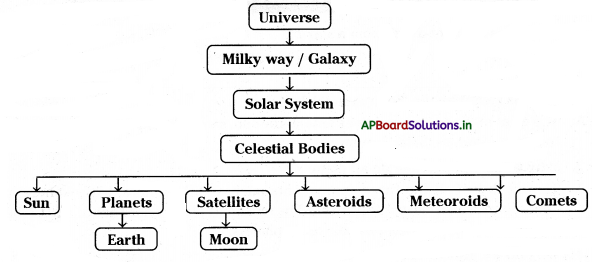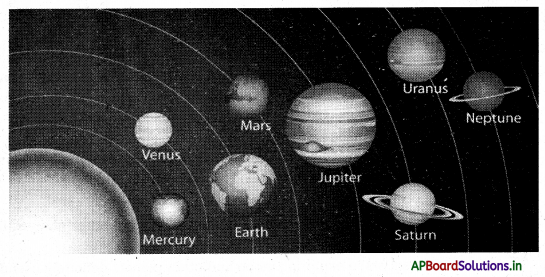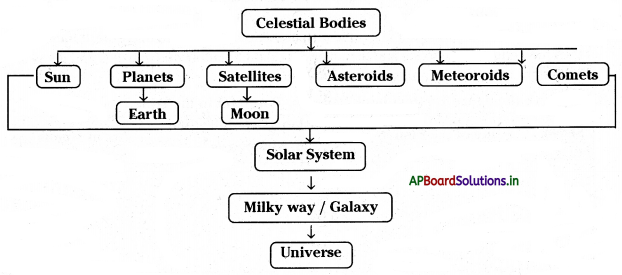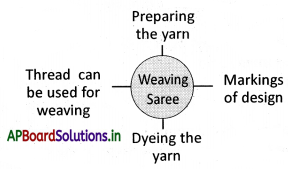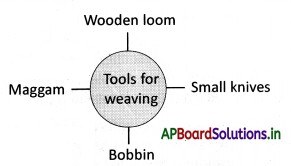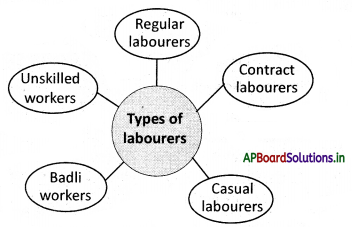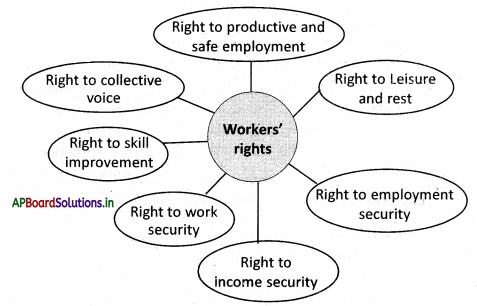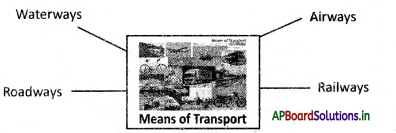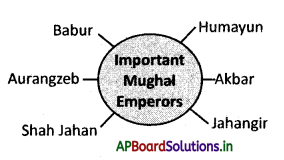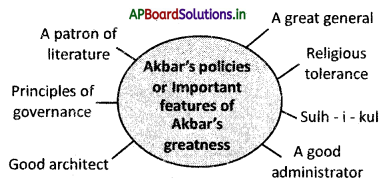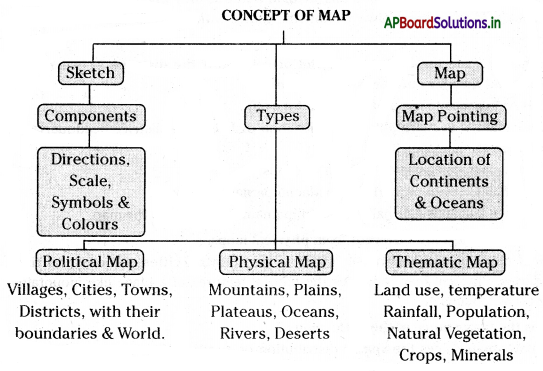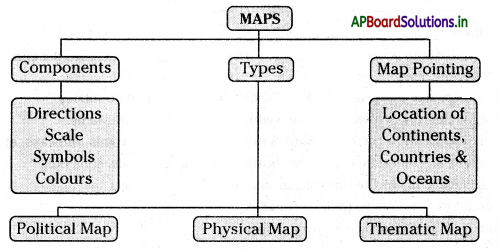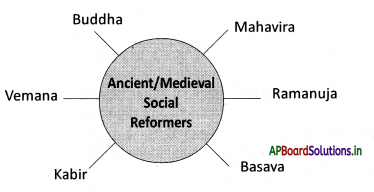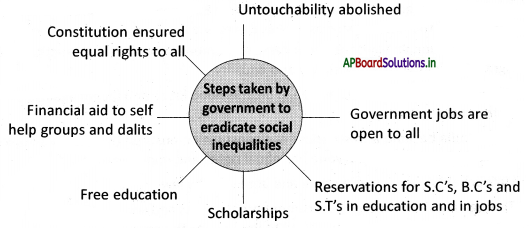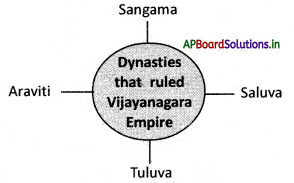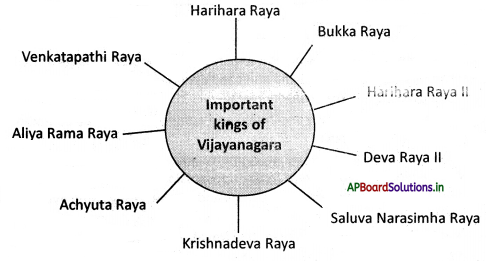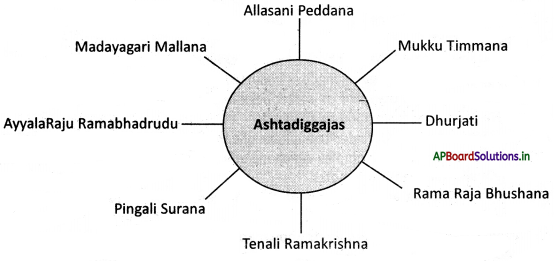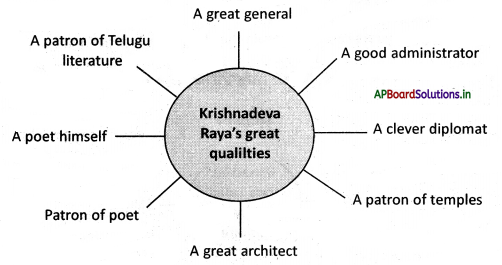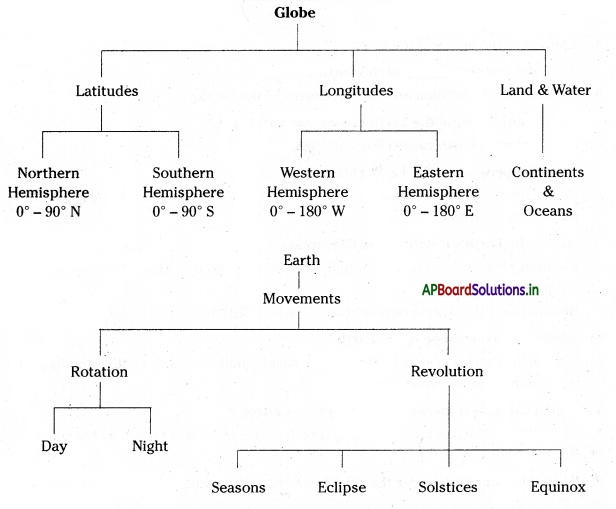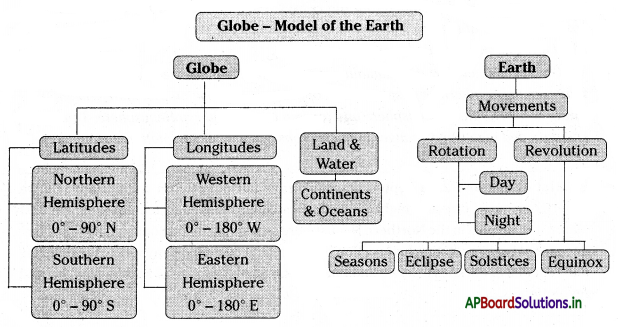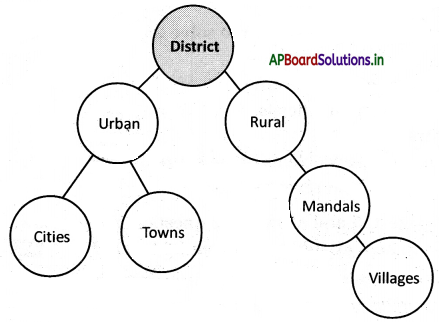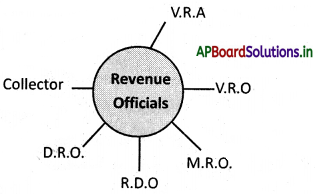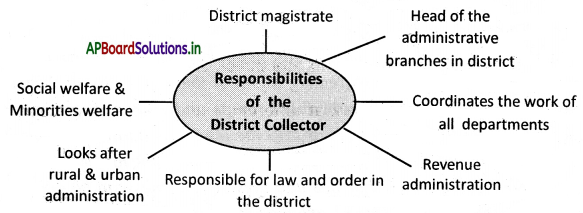Students can go through AP State Board 6th Class Social Studies Notes Chapter 1 Our Earth in the Solar System to understand and remember the concept easily.
AP State Board Syllabus 6th Class Social Studies Notes Chapter 1 Our Earth in the Solar System
→ The Sun, the Moon, and all those objects shining in the night sky are called celestial bodies.
→ The celestial bodies which have their own heat and light are called Stars.
→ The Sun is a star.
→ The celestial bodies which do not have their own heat or light and or lit by the light of the other stars are called Planets.
→ The Sun, eight planets.
→ Satellites and some other celestial bodies known as asteroids and meteoroids form the Solar system.
→ The Sun is in the center of the Solar system. it provides the pulling force that binds the Solar system.
→ There are eight planets in our Solar system. They are Mercury, Venus, Earth, Mars; Jupiter, Saturn, Uranus, and Neptune
→ Jupiter is the biggest and Mercury is the smallest planet.
→ Our home planet Earth is the third nearest planet to the Sun.
→ The shape of the Earth is described as Geoid. Geoid means an Earth-like shape.
→ Earth is called a Blue planet because two-thirds of its surface is covered by water.
→ The Earth is the most suitable planet to support life.
→ There are four spheres of Earth. Lithosphere, Hydrosphere, Atmosphere, and Biosphere.
![]()
→ A Satellite is a celestial body that moves around the Planets in the same way as the Planets move around the Sun
→ Our Earth has only one natural satellite, that is, the Moon.
→ A man-made Satellite is an artificial body. It is designed by scientists to gather information about the universe, Earth, or for communication purposes.
→ Irregularly shaped rocks between Mars and Jupiter are called Asteroids. ,
→ Meteoroids are small rocky or metallic bodies in outer space,
→ A Comet is a celestial object made up of a head and a tail.
→ A cluster of millions of stars is called a Galaxy.
→ Some millions of Galaxies make the Universe.
→ Galaxy: The cluster of stars
→ Asteroids: Irregularly shaped rocks between Mars and Jupiter
→ Meteoroids: Small rocky or metallic bodies in outer space.
→ Satellites: Celestial bodies that move around the planets.
→ Orbit: The path in which the planets move around the sun
→ Geoid: Earth-like shape
→ Atmosphere: Solid outer layer of the earth
→ Hydrosphere: Waterbodies
→ Atmosphere: Layer of air
→ Biosphere: Plants and animal life on the earth.
→ Constellation: Patterns of Stars
![]()
→ Celestial bodies: An astronomical object
→ Comets: A comet is a celestial object made up of a head and a tail.
→ Planet: A celestial body moving in an elliptical orbit around a star
